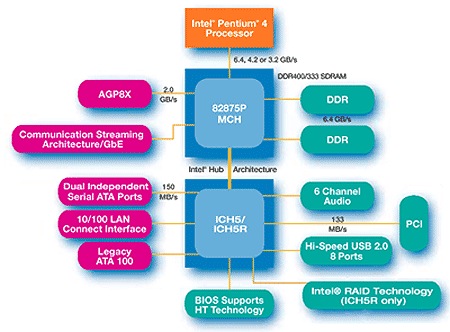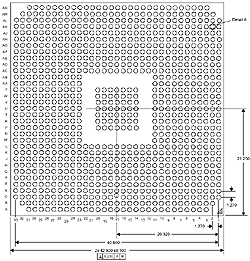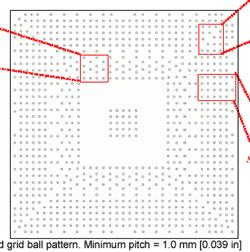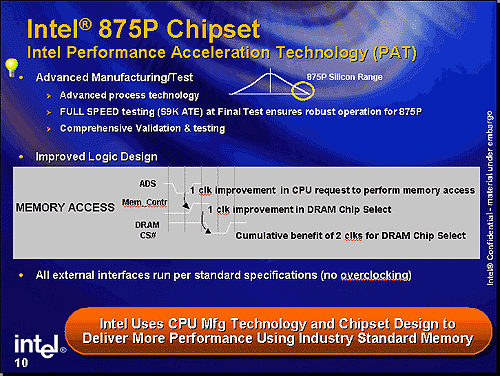
|
The question as we see it is whether or not MSI can provide the gear necessary to convert die hard overclockers who usually have a lot of brand loyalty (ie. Asus, Abit, Epox).
80% Rating: 
|
|
|
|
Home >
Reviews >
Motherboards >
MSI 875P Neo-FIS2R |
|
|
i875P Canterwood: Behind the name
While many of the specifications of the
i865PE Springdale and i875P Canterwood chipsets appear to be quite similar, the
i875P does in fact use a bigger BGA and actually has more solder balls on the
bottom of the packaging. In other words they are quite different chipsets.

The FCBGA i875P measures 42.5 x 42.5mm
and uses a total of 1005 balls to connect to the motherboard. The i865PE is
physically a bit smaller at 37.5 x 37.5 mm, and is connected to the motherboard
by just 760 balls. On an interesting note, the i875P outputs approximately 12.1W
of heat when running all four DDR DIMM's in dual channel 400 MHz mode with an
800 MHz FSB chip.
The i865PE chipset outputs a maximum of
11.3W of heat energy while running four DIMM's in Dual channel 400MHz memory mode under 800 MHz FSB; so it basically runs a
bit cooler, but not by much. Both the i875P and i865PE chipsets can run up to a
maximum temperature of 99 degrees Celsius, or until the solder balls start
melting. ;-)
 
Base of the i875P chipset shown at
Left, i865PE at Right.
There are two obvious features that the i875P chipset has that the i865PE
chipset does not. The first is ECC memory support and the second is
a technology known as "PAT".
No, PAT is not a
androgynous character from Saturday Night Live, though you would have
thought Intel could have chosen something a bit more catchy to describe what
they term "Performance Accelerating Technology."
Support for ECC DDR memory is not too
surprising since Intel are targeting workstation users as well mainstream
desktops with the i875P chipset. Data integrity is more important than anything
else in the workstation world after all. In the desktop world though, ECC has
not really caught on with the average user due to the higher costs and minimal
data integrity advantages.

For a company that came up with
NetBurst, Hub Architecture and SSE2, Performance Acceleration
Technology seems like a very tame advancement. PAT basically works inside
the memory controller to run things a bit more efficiently. As the example above
shows (from Canterwood PowerPoint presentation), between the processor and
memory controller PAT saves the system 1 clock cycle and from the memory
controller to system memory we save another clock cycle.
While saving two memory clock cycles may
not sound like a lot, when you consider the billions of calculations that are
relayed between the processor, memory controller and system RAM, it can a
huge difference if you believe what Intel says.
|
